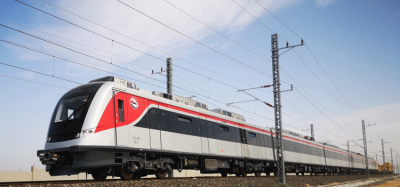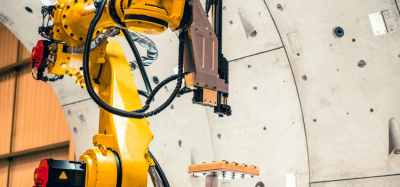Staying connected: Wi-Fi and evolving technology in public transportation
Posted: 9 January 2017 | | No comments yet
“Within public transportation there is still room for growth in order to keep up with modern infrastructure and evolving technology,” says Belden’s Richard Weatherburn.


Our digital, always-on world has given rise to a global culture that expects instant access to information. This desire to be connected doesn’t stop, regardless of where people go.
To meet this demand, in most places – including our homes, workplaces, coffee shops and bars – wireless technology has allowed us to stay connected. But what about the journey between all of these locations?
For car and air travel, wireless internet, 3G, 4G and LTE technologies have supported this need for constant information and real-time communication. However, when it comes to train and other public transportation methods, there’s still room for growth.
Public transportation has historically lagged behind other forms of transportation because keeping up-to-date with modern infrastructure or evolving technology to deliver on passenger expectations has not always been a top priority. After all, passengers will not thank an operator for spending time and money on passenger Wi-Fi when trains are dirty and unreliable. So as a priority in rail operators’ business strategies, the provision of passenger Wi-Fi tends to come a long way down the list – after essential elements such as infrastructure, rolling stock, ensuring safe operation and running to schedule. Once these and numerous other essential requirements have been consistently achieved over a period of years, attention will begin to turn to more passenger benefits such as passenger Wi-Fi.
What are passengers looking for?
Passengers expect instant travel updates, constant access to Wi-Fi and little to no delay waiting for their train to arrive. They want to see and experience the latest technology, and enjoy convenient and safe travel. To achieve these demands, public transportation infrastructure – specifically the wireless networking components – needs to keep up. These technologies also can help train and subway operators improve fuel efficiency, travel reliability and passenger safety. Important amenities include:
- Real-time information – As passengers continue to expect immediate access to information, real-time passenger information systems are essential. These systems let passengers know if a train is delayed and provide the new, estimated arrival times
- Ticketless travel – Printed paper tickets are a thing of the past. With smartphones and devices, combined with wireless technology, travellers can buy tickets, reserve their seat, and board using a virtual ticket
- Safety measures – Cameras for video surveillance within trains are becoming more widespread. There are operational benefits, as well as employee and passenger benefits to help workers and travellers feel safer and more comfortable.
The shift to wireless: what we need to know
While moving to more updated technologies, especially wireless capabilities, is essential for the success of public transportation – it won’t be easy.
Making the shift will require two big steps:
- Gather the right team
Bringing together the right experts within a company or organisation to make informed decisions about transportation infrastructure is essential to creating systems that are expandable in the future. This could include engineering, IT, city government and operations teams.
- Install the right technology – consideration is needed
A pre-requisite for installation on-board train builders’ vehicles and for fitment by system integrators is appropriate railway on-board vehicle certification: IEC/EN for Europe and AAR/AREMA for North America. Without this certification it is difficult to sell equipment onto trains. When it comes to compatibility with train-to-ground access points, there is a key benefit in using Ethernet; providing standardisation of equipment and protocols, which in turn enables rapid improvements in performance, features, and ease of use while decreasing costs. This guarantees interoperability between different vendors and with standard tools and devices.
And while the desired technology is available all over the world, most of the equipment available is not suitable for installation on trains or other public transportation. This is because the environment is extremely challenging for electronic devices, both electrically and physically. To ensure devices can survive the rigors of use on trains, select equipment that has been tested to withstand certain circumstances, including resistance to fire and smoke, extreme vibration and exposure to wide temperature ranges.
To meet these needs, and remain competitive against other modes of transportation, public transportation leaders need to understand the benefits of wireless and other evolving technologies.








